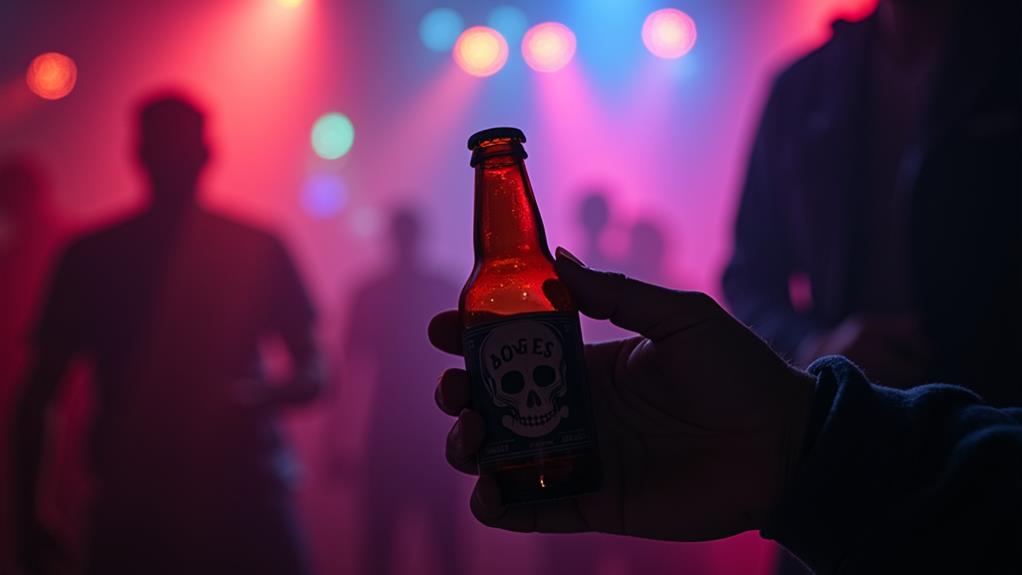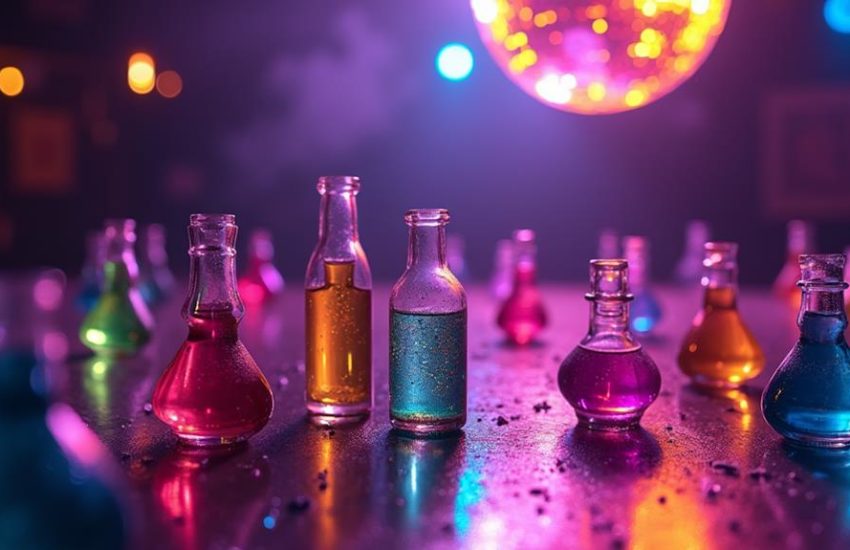Party Drug or Poison? The Disturbing Disguise of Safe Poppers
Poppers, volatile alkyl nitrites used recreationally, blur the line between party drug and potential poison. These substances, inhaled for euphoric and muscle-relaxing effects, can cause rapid vasodilation and a temporary high. Nevertheless, their perceived safety masks significant health risks. Acute side effects include headaches and dizziness, whereas chronic use may lead to irreversible brain damage and vision problems. The legal status of poppers varies globally, complicating regulation and accessibility. In spite of their popularity in certain communities, the potential for dangerous drug interactions and long-term health consequences raises serious concerns. Understanding the full scope of poppers' effects is essential for informed decision-making.
What Are Poppers?
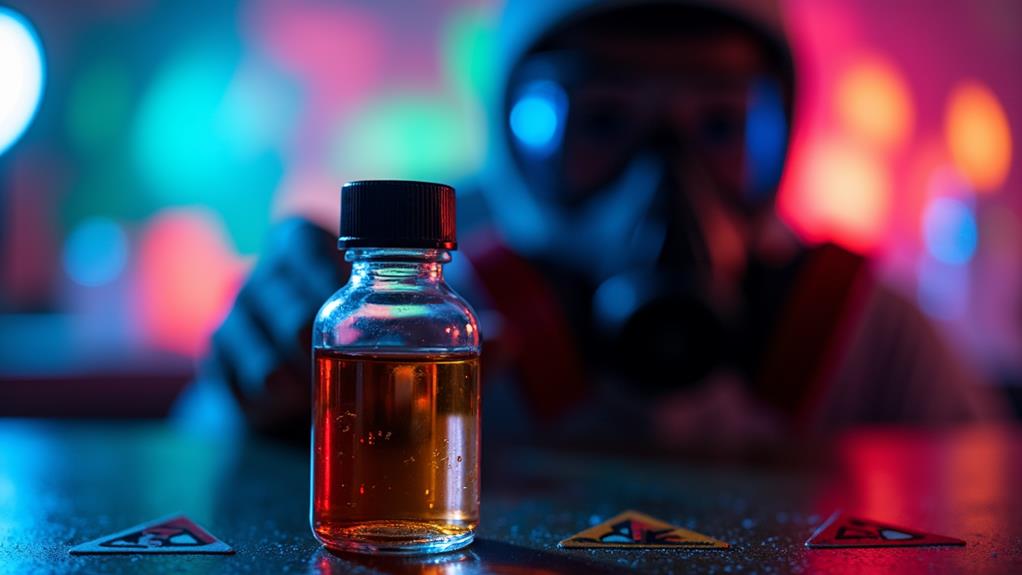
Defining poppers requires understanding their chemical composition and typical usage. Poppers are volatile alkyl nitrites, most commonly isopropyl nitrite or amyl nitrite, inhaled for their euphoric and muscle-relaxing effects. These substances are clear, yellowish liquids with a distinctive fruity odor, typically sold in small bottles.
Historically, poppers were used medicinally to treat angina pectoris. Today, they are primarily consumed recreationally, especially in nightlife and sexual contexts. Types of poppers include "room odorizers" and "video head cleaners," labels used to circumvent legal restrictions.
In spite of the euphoric effects, low oxygen levels and visual disturbances can occur, posing serious health risks.
The effects of poppers are rapid and short-lived, usually lasting only a few minutes. Users report heightened sensations, lowered inhibitions, and improved sexual experiences.
Nevertheless, these substances can pose significant health risks, including dizziness, headaches, and potentially dangerous interactions with other drugs, particularly erectile dysfunction medications.
Chemical Composition and Effects
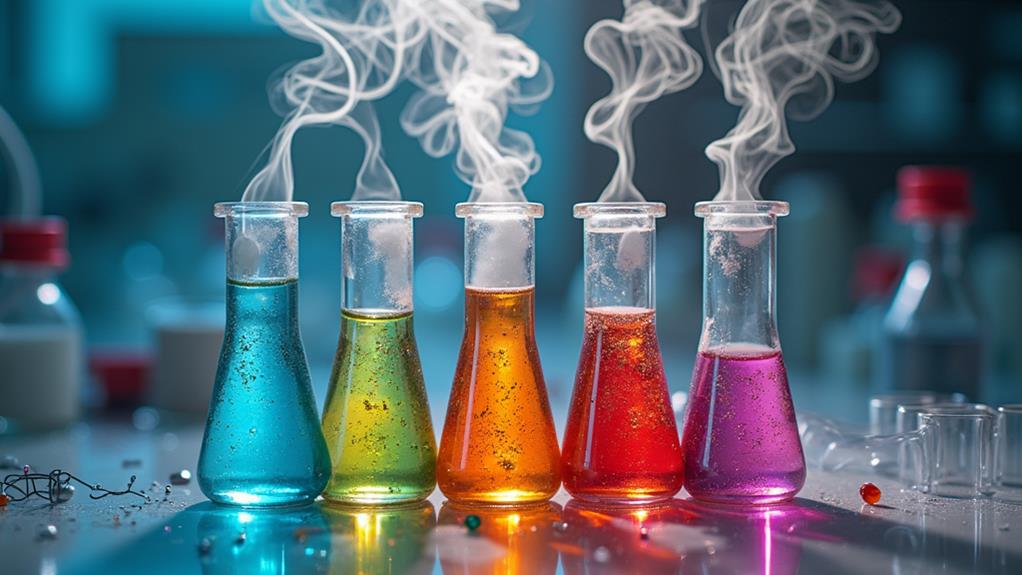
Poppers primarily consist of alkyl nitrites, with the most common variants being amyl nitrite, butyl nitrite, and isopropyl nitrite. These compounds share a similar chemical structure, characterized by a nitrite group bonded to an alkyl chain.
When inhaled, these substances rapidly enter the bloodstream, causing immediate physiological effects. The primary action of poppers is vasodilation, which leads to a sudden drop in blood pressure and increased heart rate. Users often experience a rush of warmth, dizziness, and euphoria lasting several minutes.
Moreover, poppers can relax smooth muscles, particularly in the anal and vaginal areas, making them popular in sexual contexts.
Nevertheless, these effects come with risks, including headaches, nausea, and potential methemoglobinemia. Users may likewise experience muscle twitching and tremors linked to popper use. Regular use may lead to tolerance and dependency.
Understanding the chemical composition and effects of poppers is vital for informed decision-making within social circles where their use is prevalent.
Health Risks and Complications

Concern for the health implications of popper use has grown as their recreational consumption has increased. Acute side effects include headaches, dizziness, and nausea, whereas prolonged use may lead to more severe complications. Chronic use has likewise been linked to irreversible brain damage, particularly in the cerebral cortex and cerebellum.
Inhaling poppers can cause a dangerous drop in blood pressure, potentially resulting in fainting or cardiovascular issues. Prolonged exposure has been linked to retinal damage and vision problems.
Despite their perceived safety in social settings, poppers carry significant risks. The addiction potential is considered low, but psychological dependence can develop. Social perceptions often downplay these dangers, leading to uninformed use.
Moreover, poppers can interact negatively with medications like Viagra, potentially causing life-threatening hypotension. Users with pre-existing heart conditions or glaucoma face heightened risks.
Although poppers continue to be popular in certain communities, understanding their health risks is essential for informed decision-making.
Legal Status and Availability
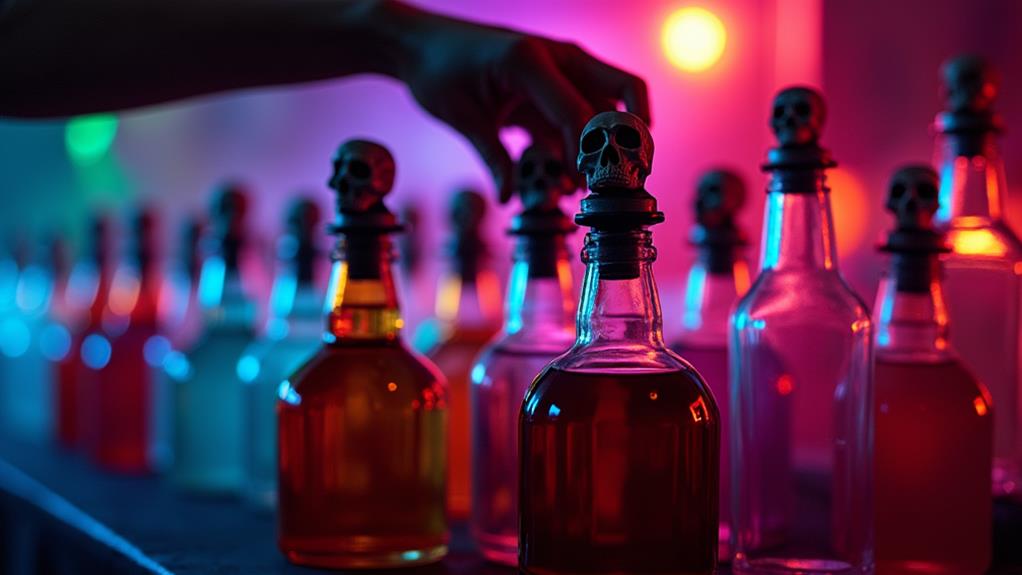
Ambiguity surrounds the legal status of poppers worldwide, with varying regulations across different jurisdictions. In some countries, poppers are classified as prescription drugs, whereas others categorize them as controlled substances. This inconsistency in legal definitions creates challenges for enforcement and public awareness.
Market trends indicate a shift towards online sales and discreet distribution channels, making poppers more accessible in spite of legal restrictions. The ease of procurement through these avenues raises concerns about quality control and consumer safety.
Legal implications for possession and distribution vary, with some regions imposing strict penalties whereas others maintain a more lenient approach. The availability of poppers in certain establishments, such as adult stores or nightclubs, further complicates the regulatory framework.
Moreover, there are significant health risks associated with the inhalation of poppers, exacerbating the need for regulatory clarity. This ambiguous legal status highlights the need for clear, consistent legislation to address the potential risks associated with poppers use and safeguard public health and safety.
Harm Reduction Strategies
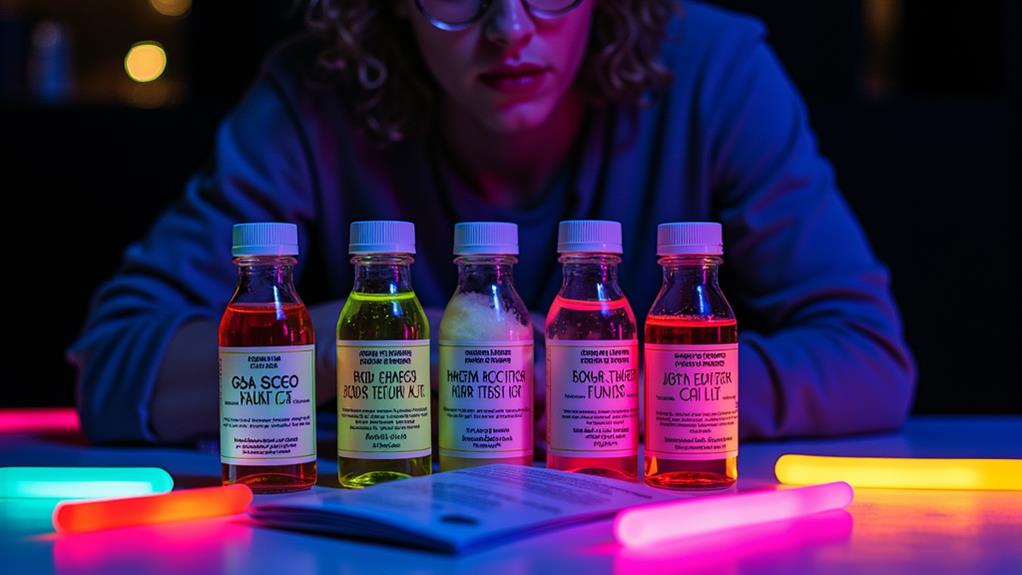
In spite of the legal ambiguities surrounding poppers, harm reduction strategies play a crucial role in mitigating potential health risks associated with their use. These strategies primarily focus on user education and community outreach to promote safer consumption practices.
Key harm reduction measures include:
- Providing accurate information about potential side effects and interactions with other substances
- Encouraging proper storage and handling techniques
- Promoting the use of lower concentrations and smaller quantities
- Advising against mixing poppers with erectile dysfunction medications
- Recommending regular health check-ups for frequent users
For instance, users should be aware that prolonged use of poppers can lead to severe eye problems such as blurred vision and central vision loss.
Community-based organizations often collaborate with healthcare professionals to disseminate this information through workshops, online resources, and peer support networks. By nurturing a sense of belonging and shared responsibility, these initiatives aim to empower users to make informed decisions and prioritize their well-being within the context of recreational popper use.
Call Us To Assist You
Poppers present a complex environment of risk and reward. Like a wolf in sheep's clothing, these volatile liquids masquerade as harmless party boosters as they harbor potentially severe health consequences. The legal ambiguity surrounding poppers further clouds the issue. To navigate this treacherous terrain, harm reduction strategies serve as crucial guideposts. Education, responsible use, and medical awareness form a protective triad against the hidden dangers lurking within these deceptively innocuous vials.
